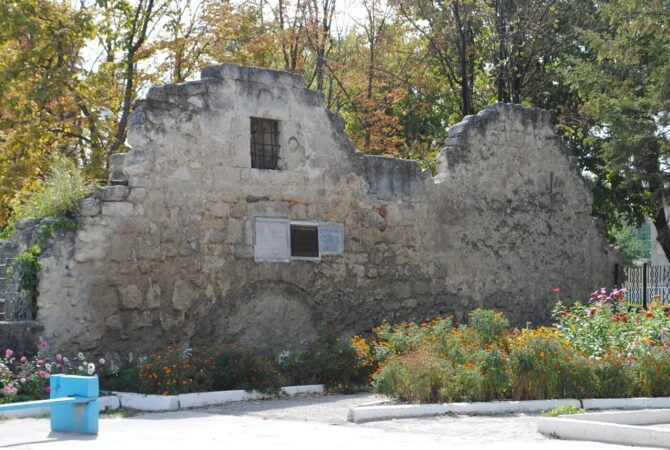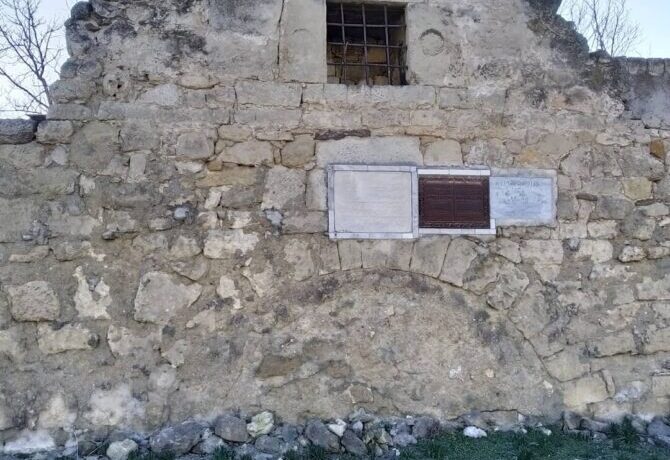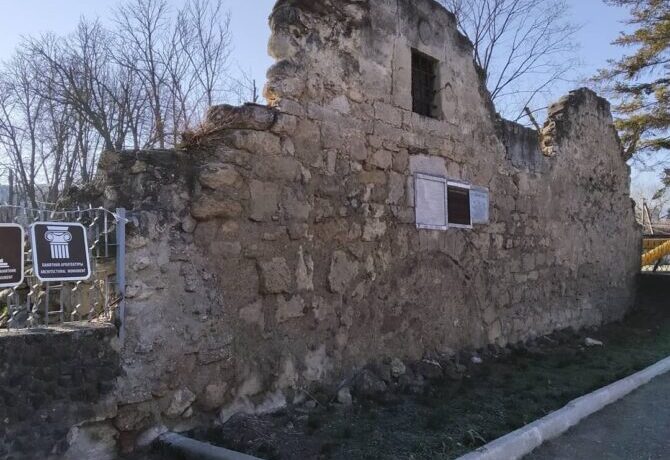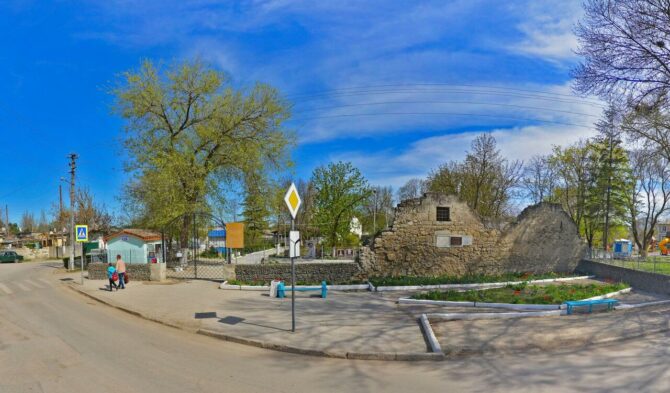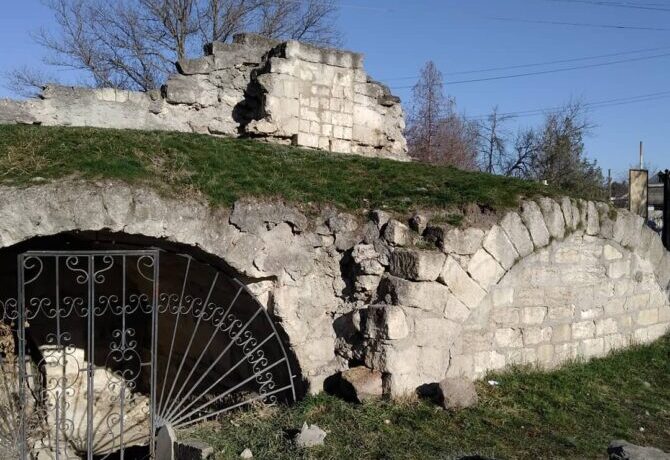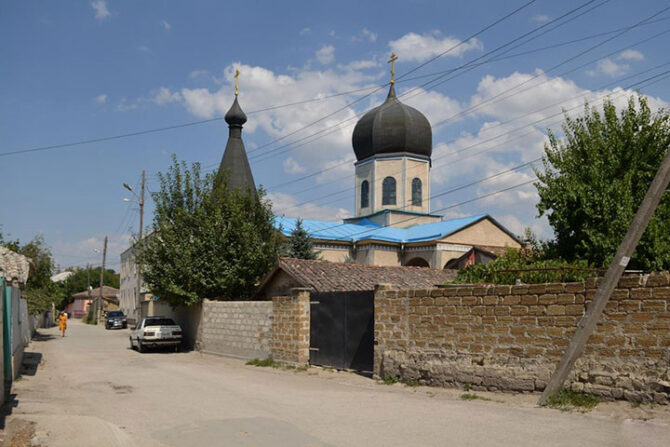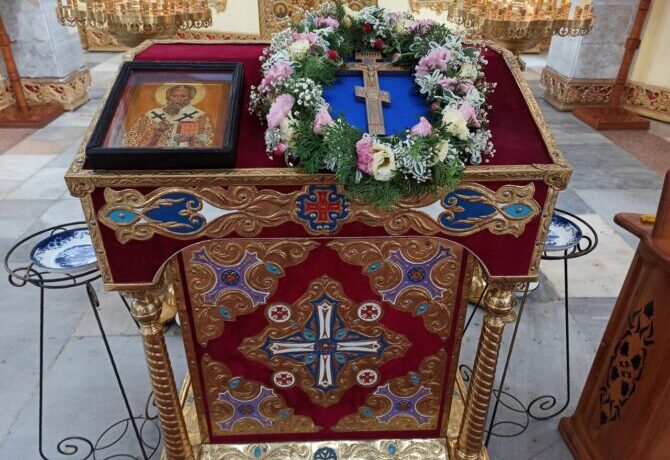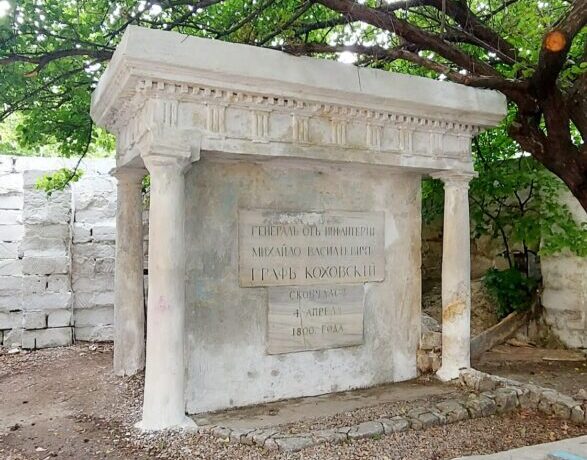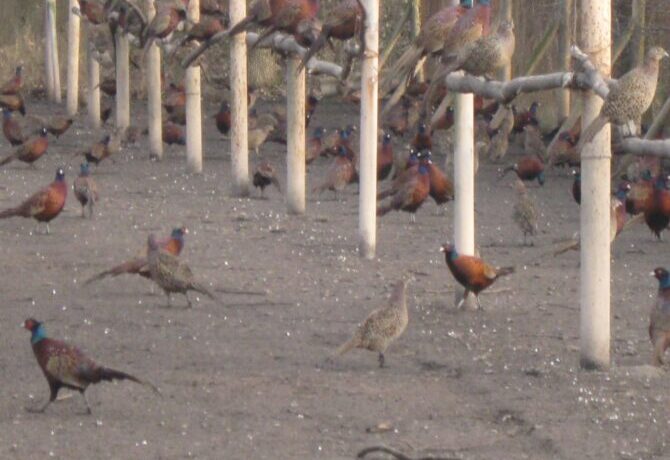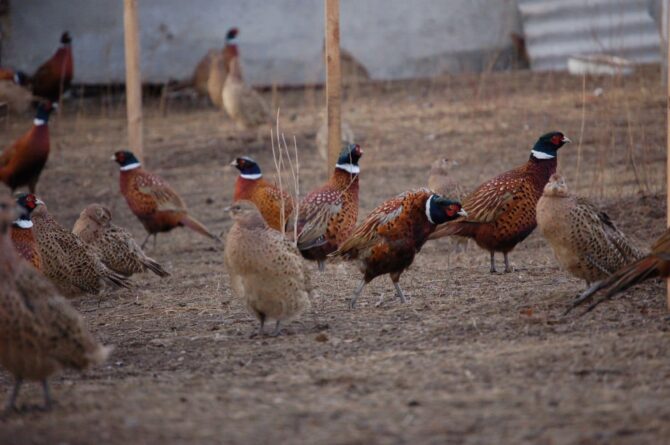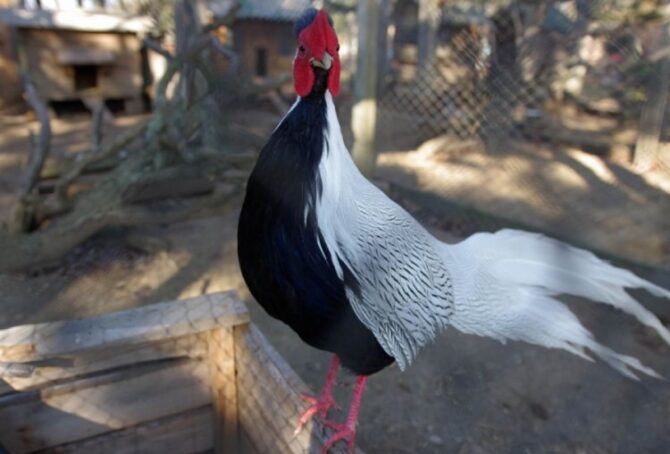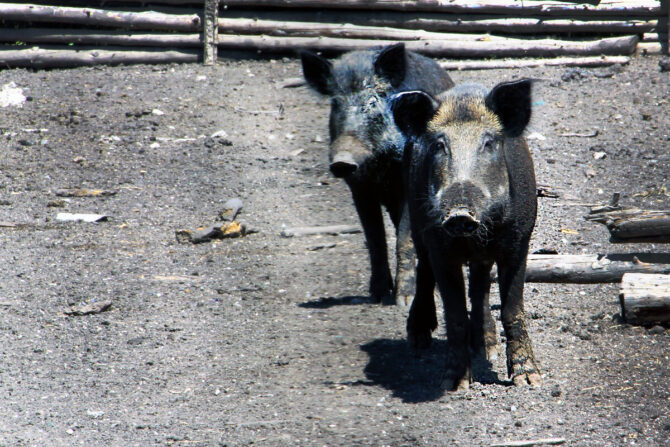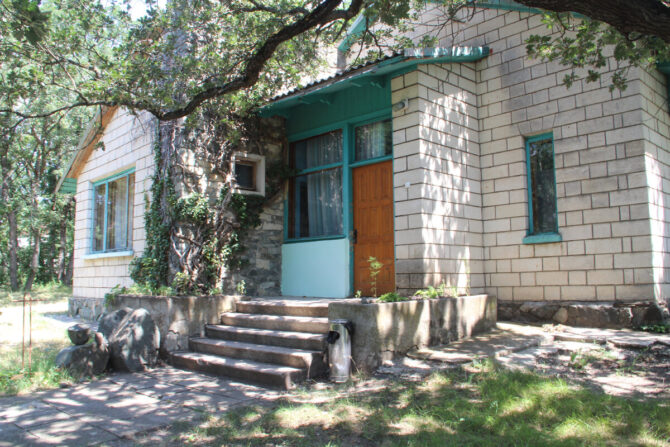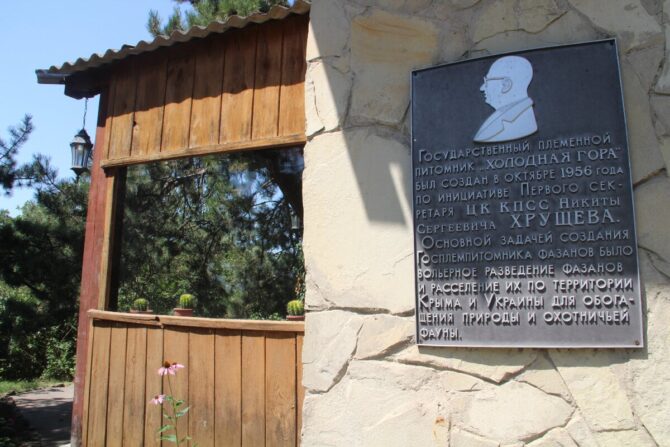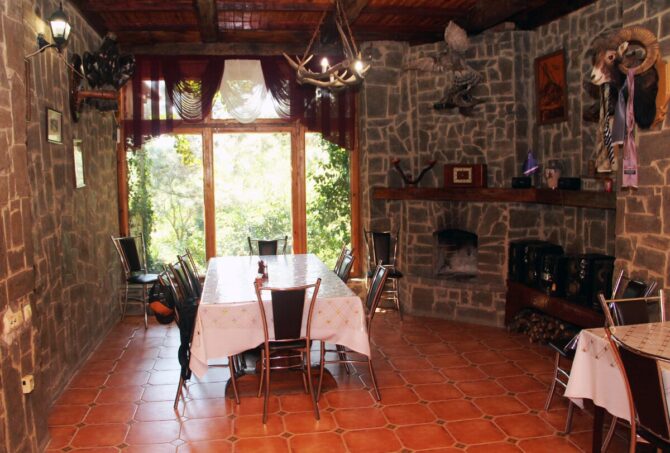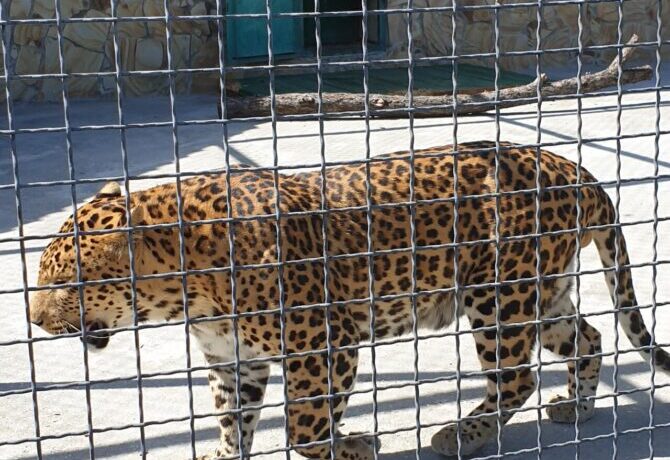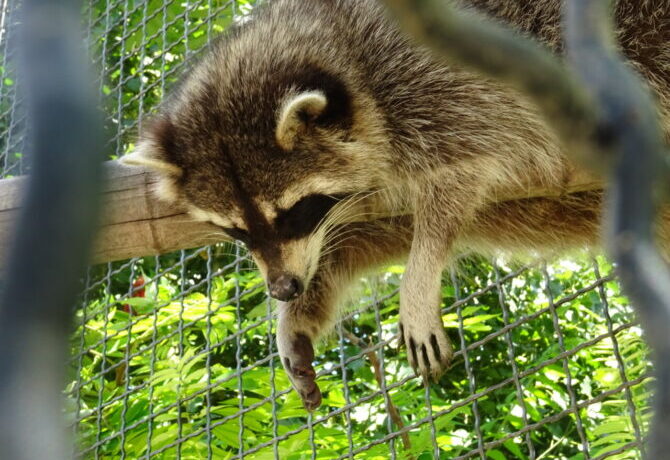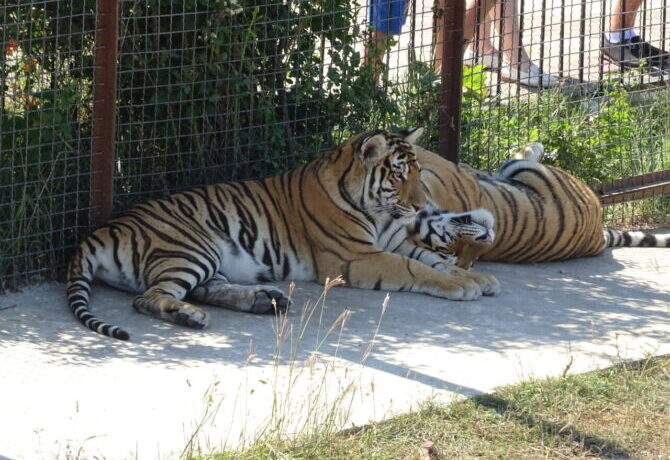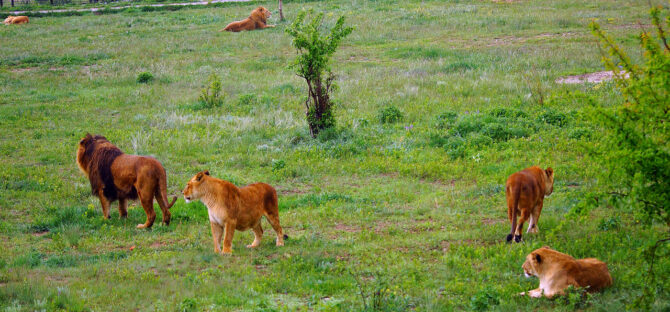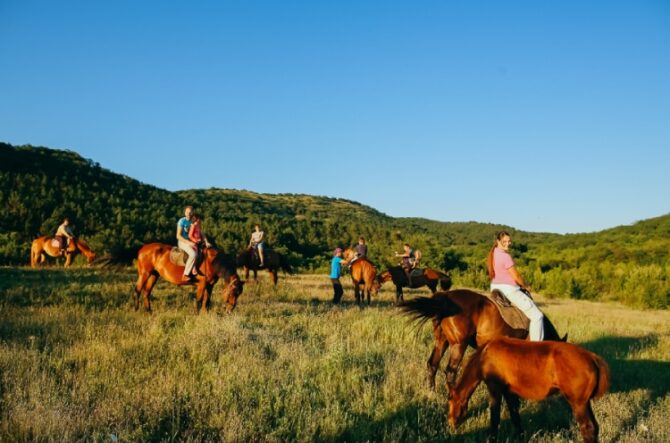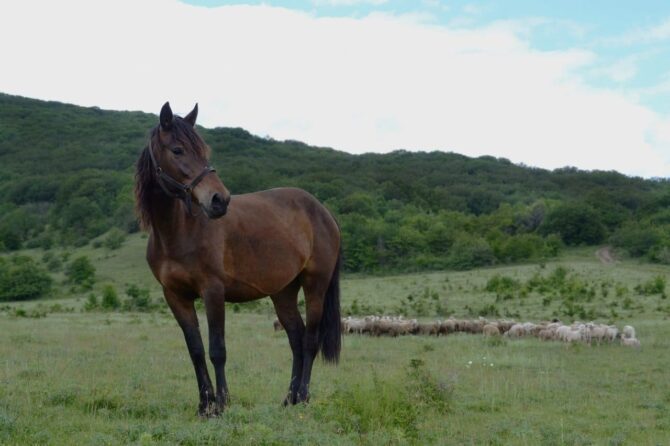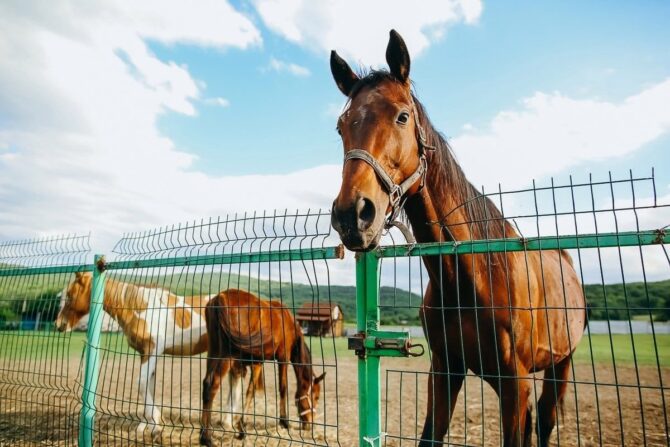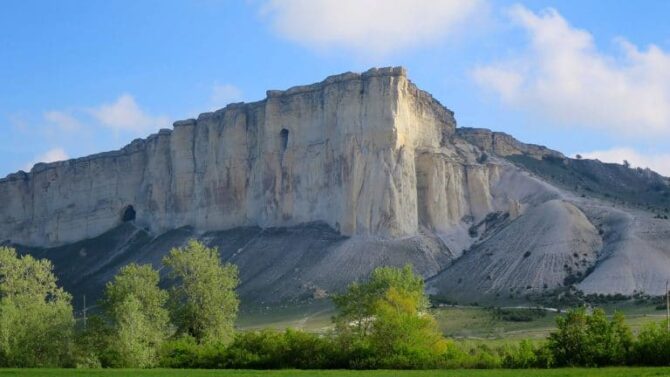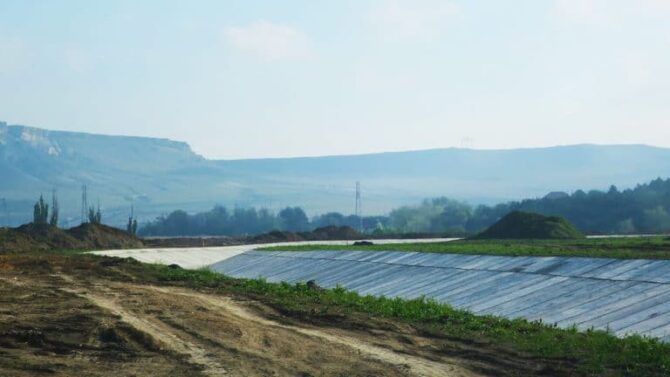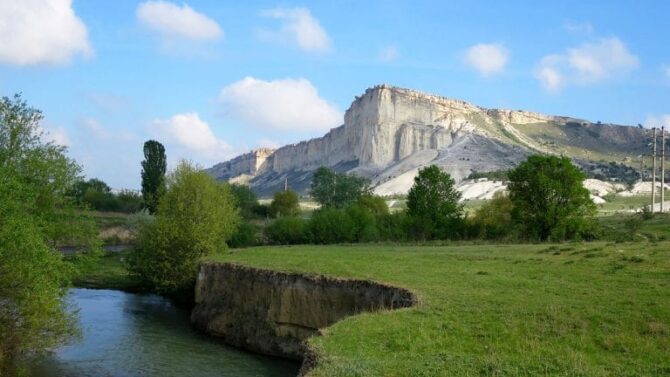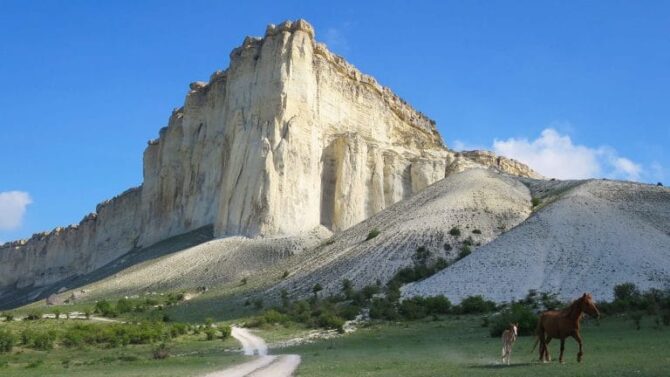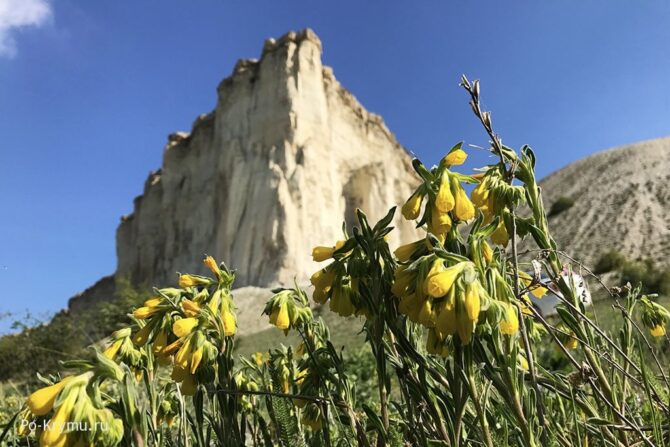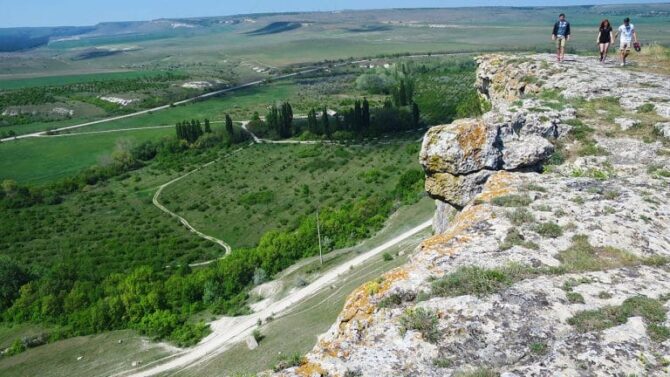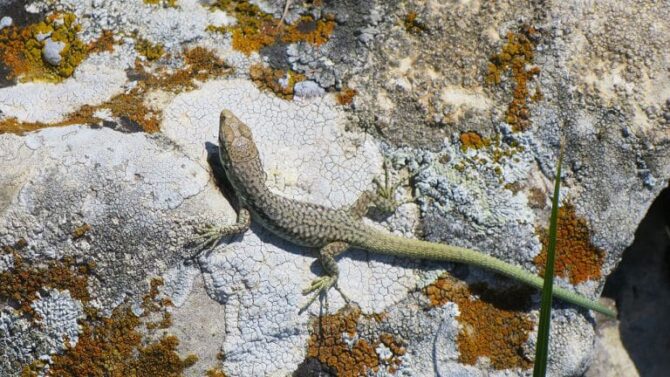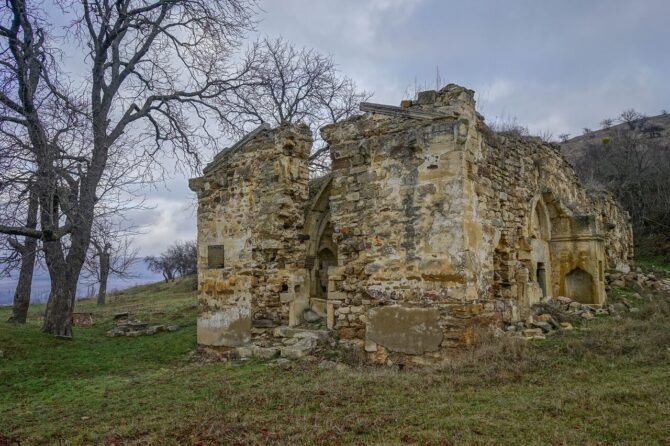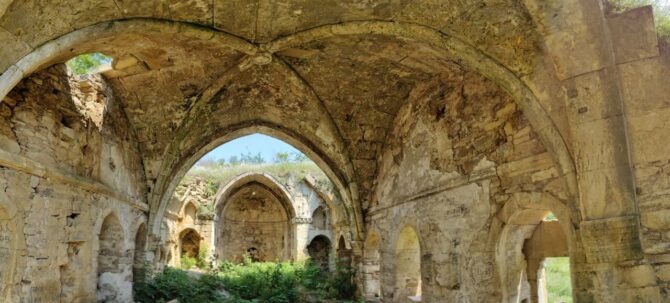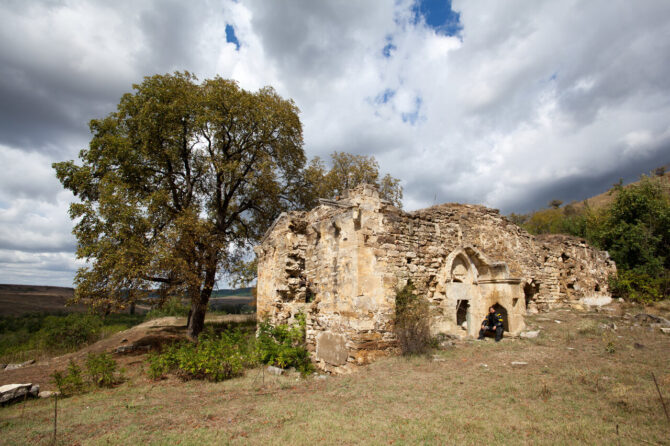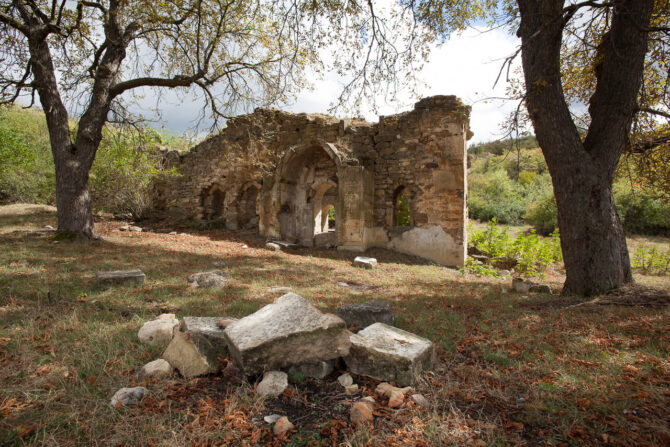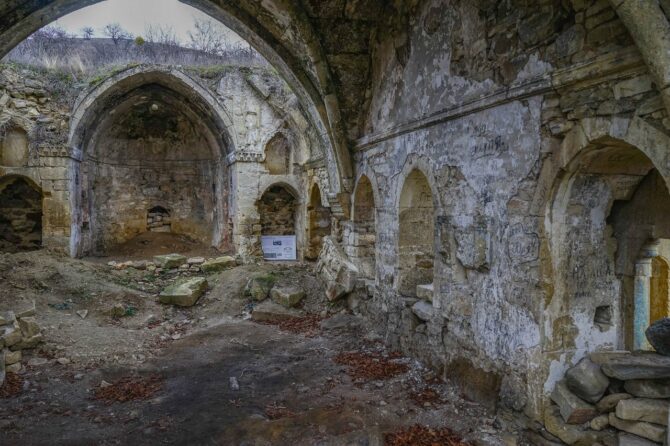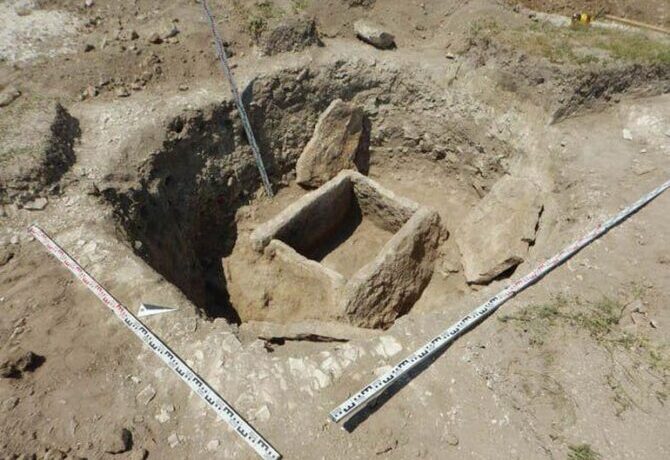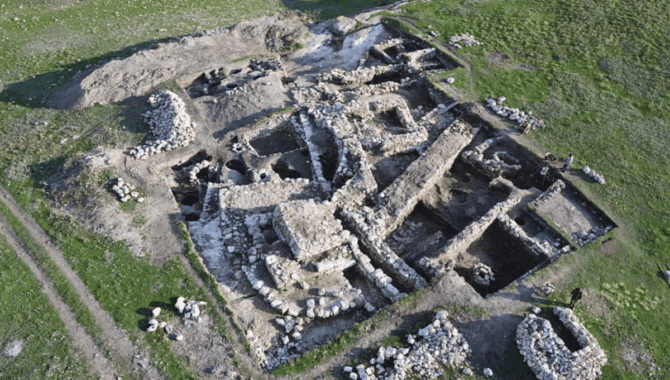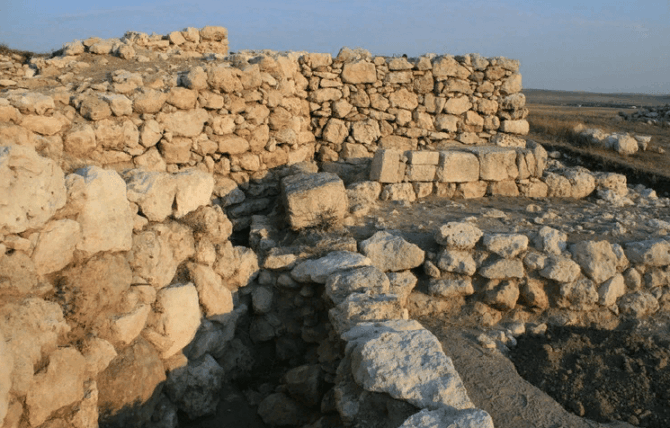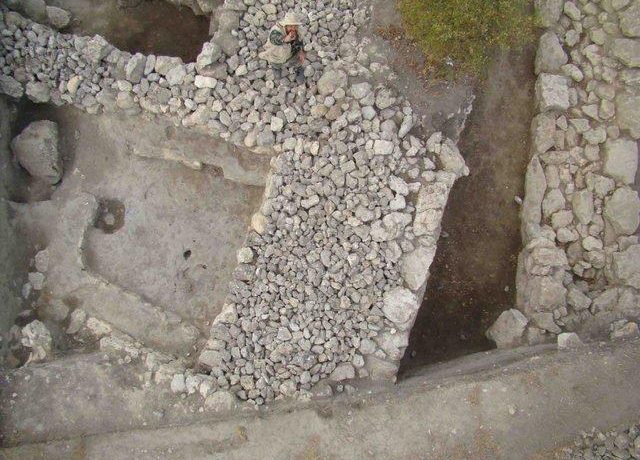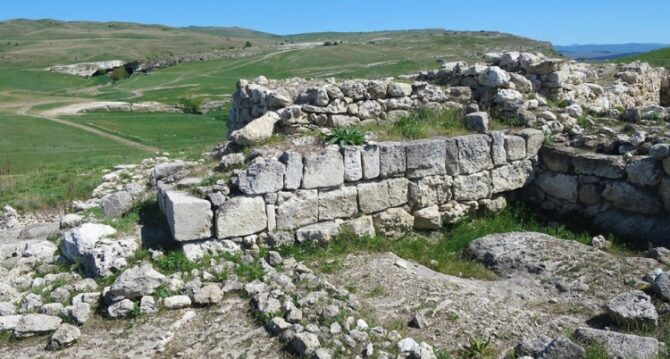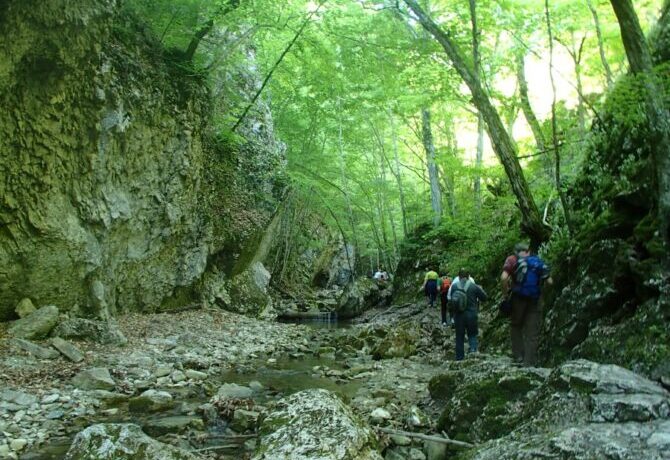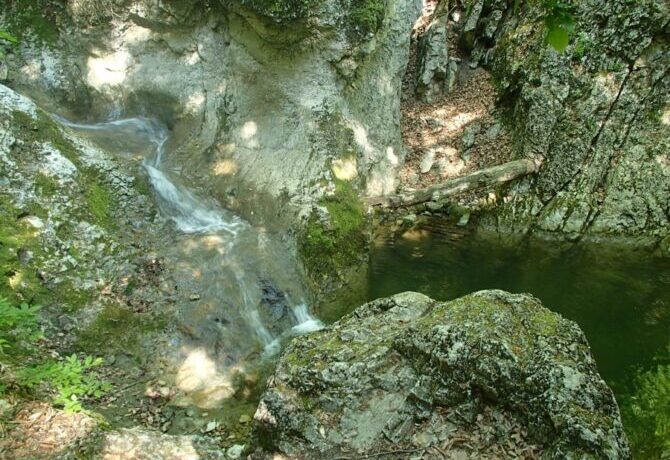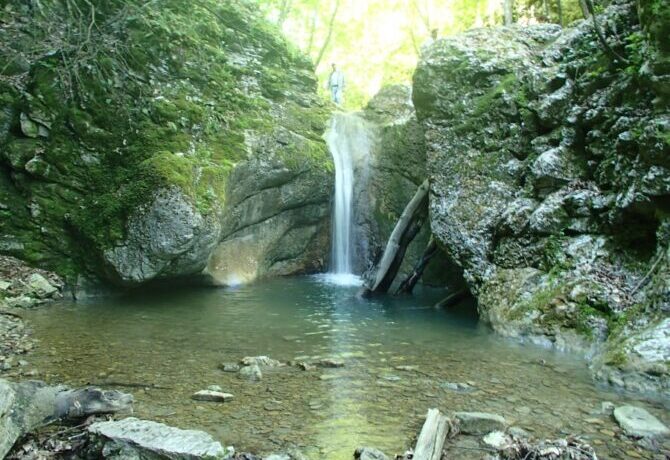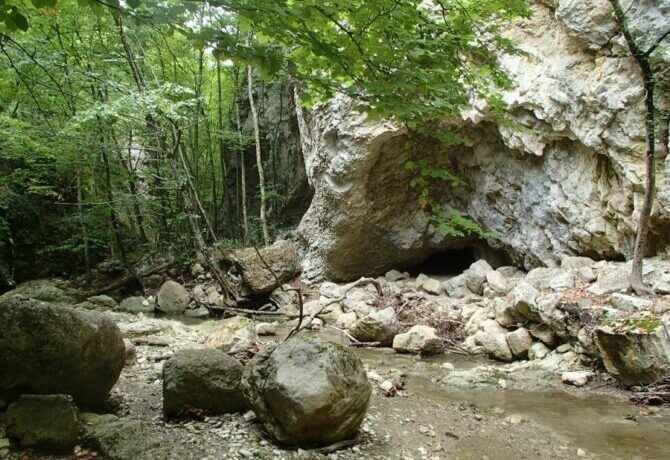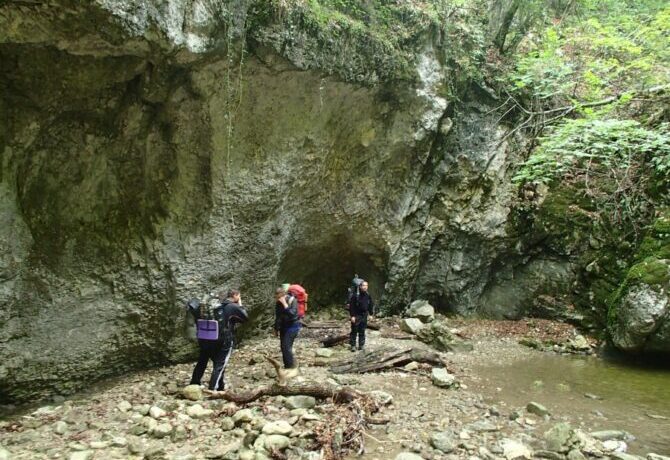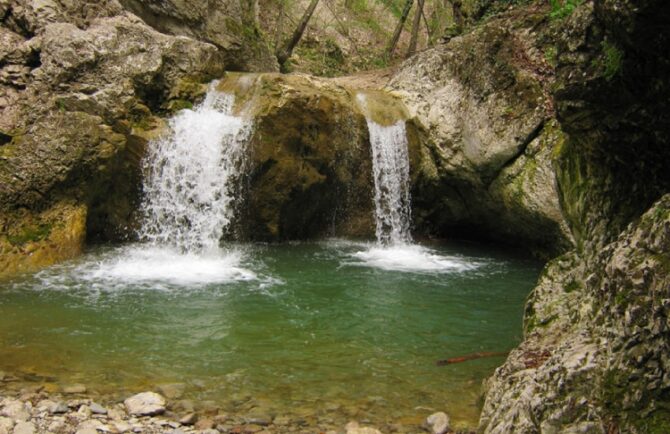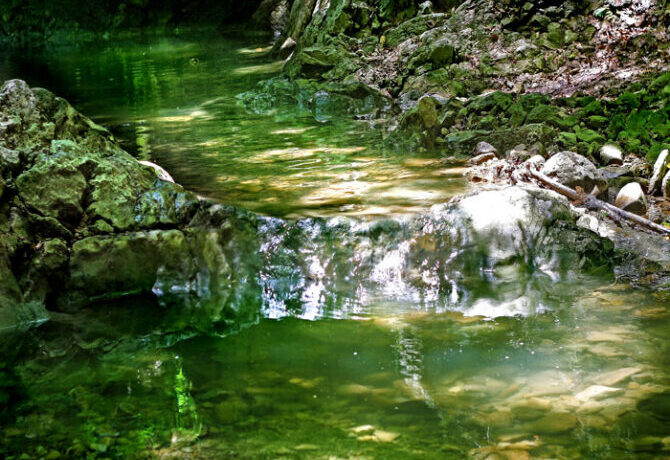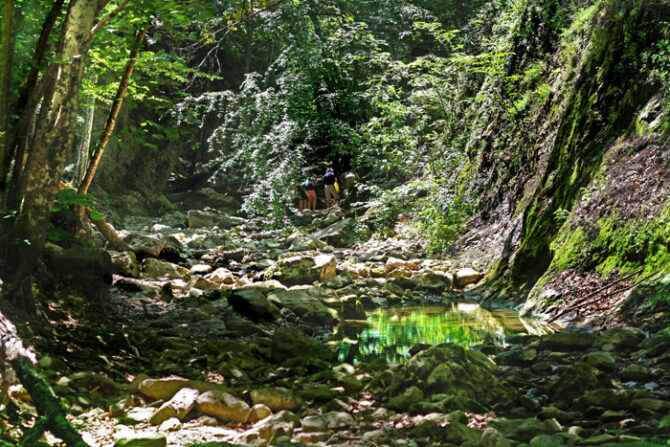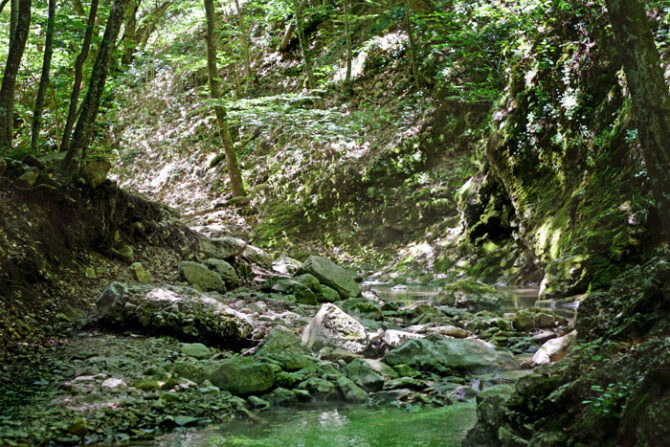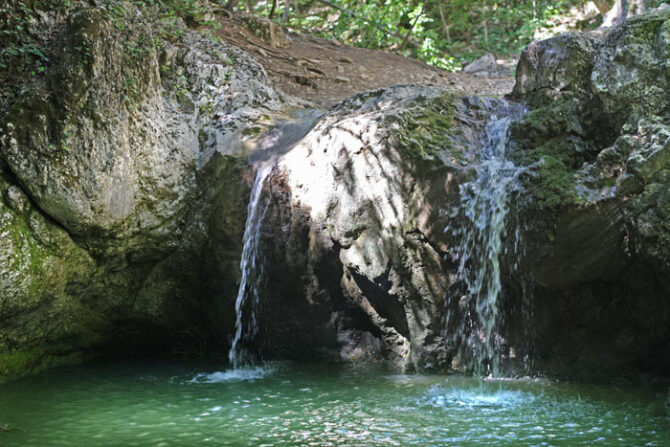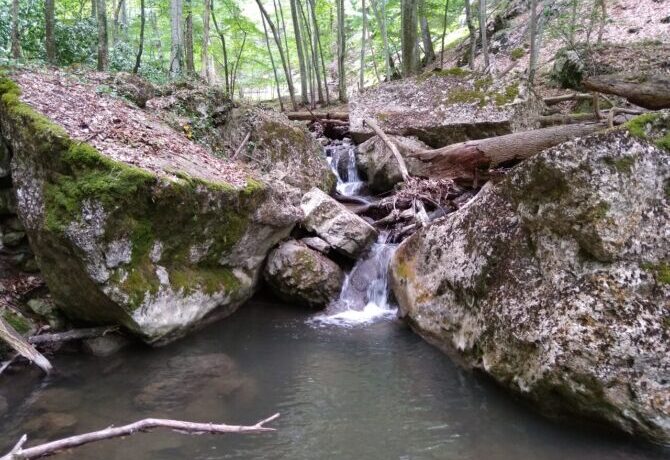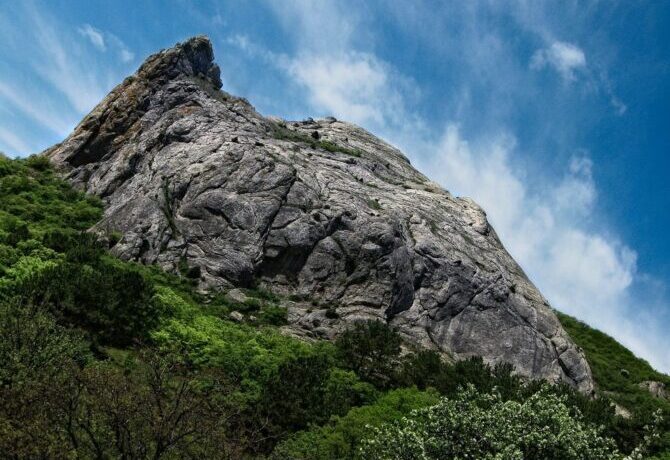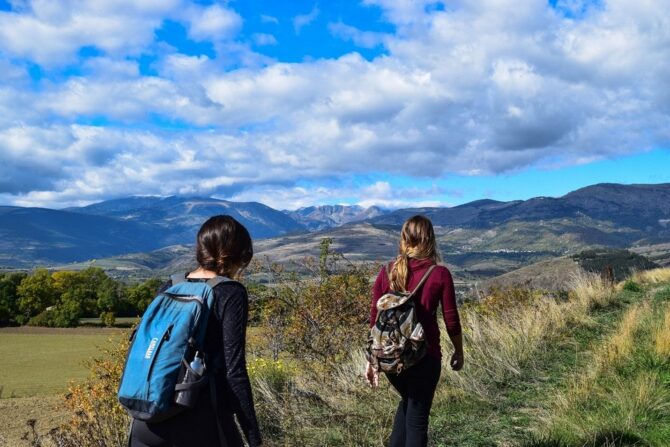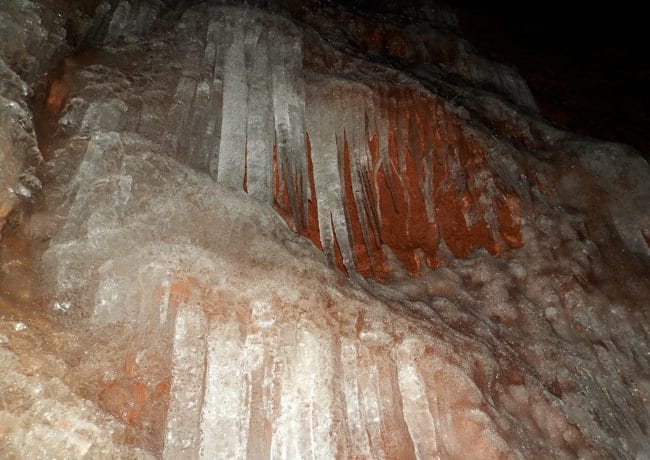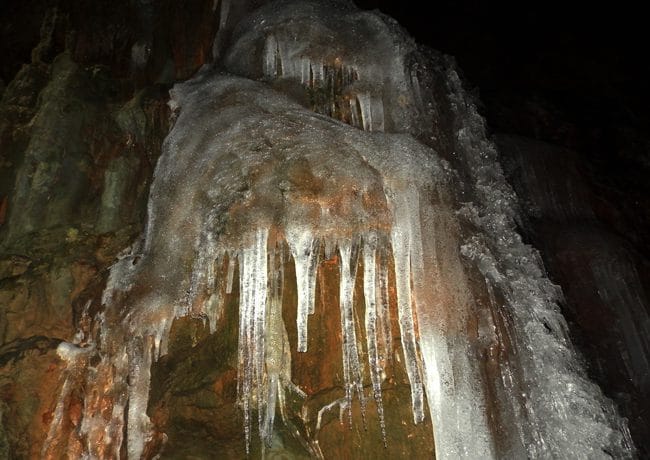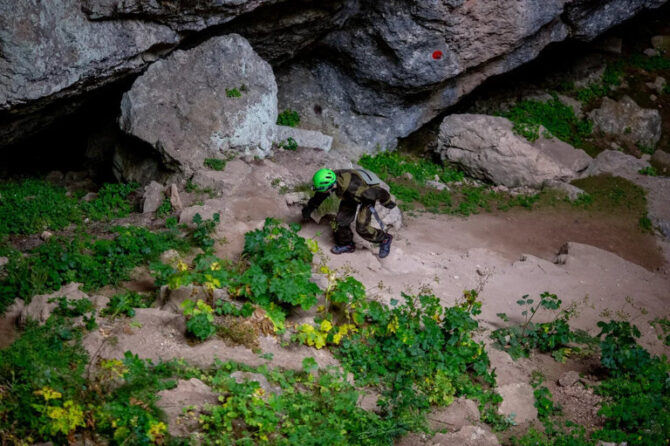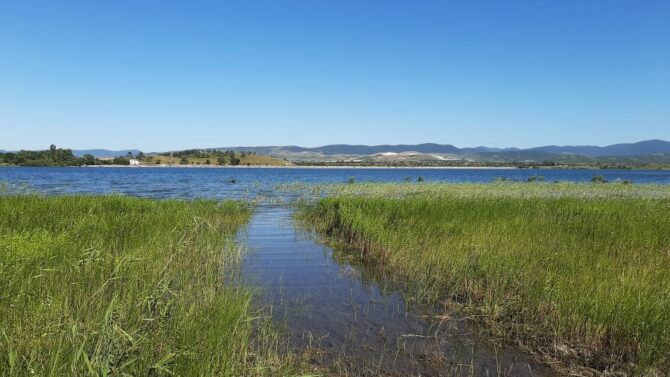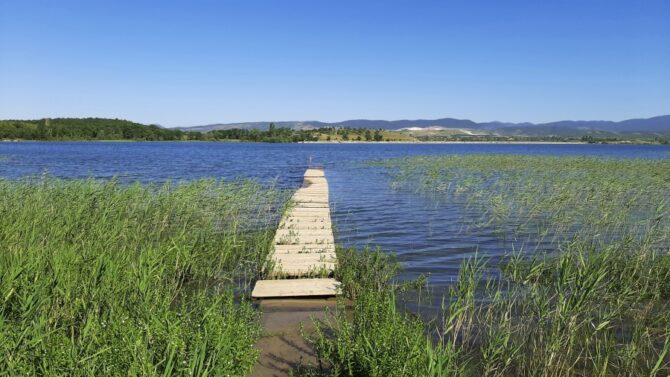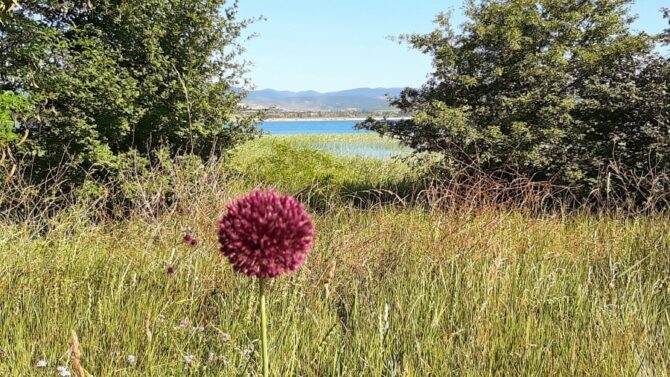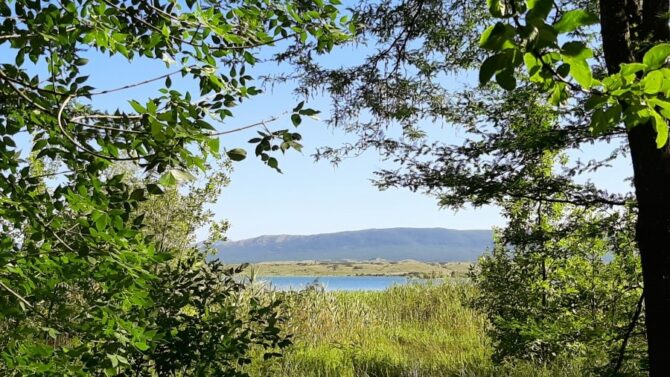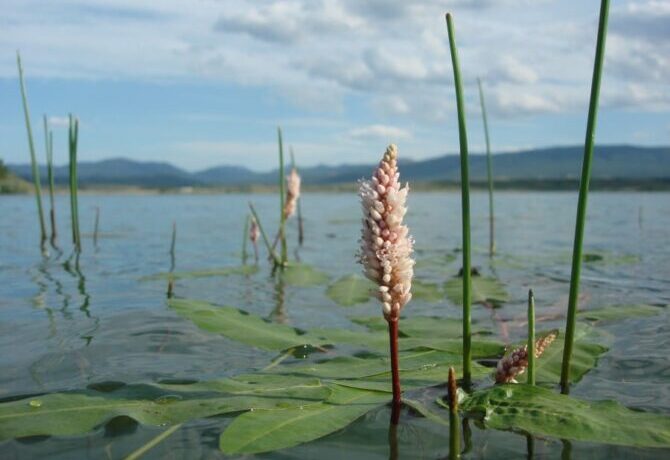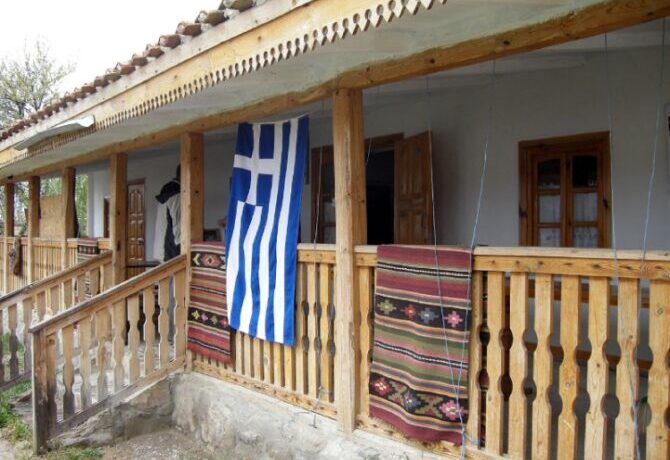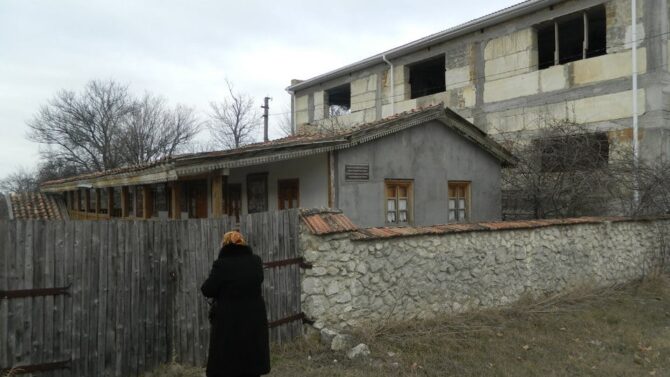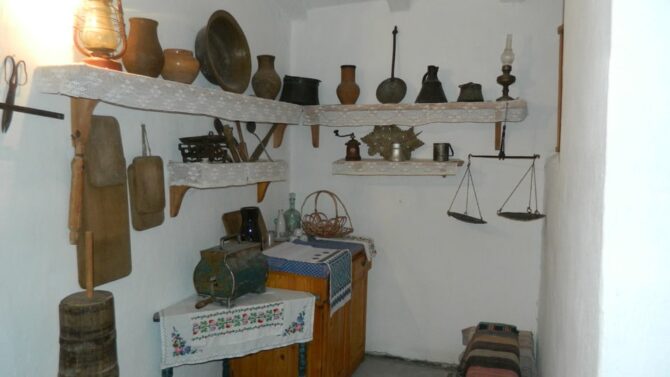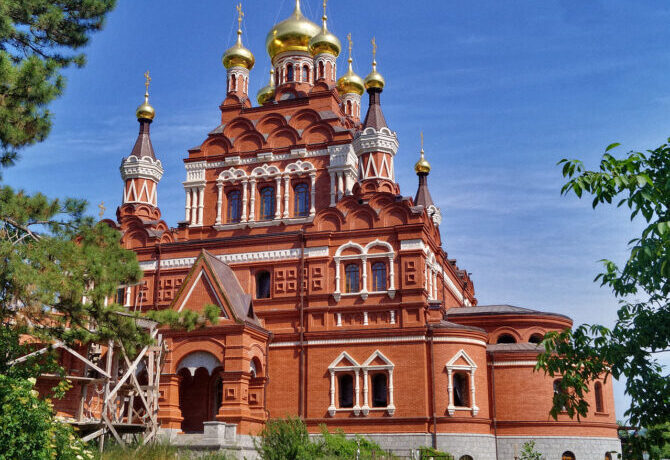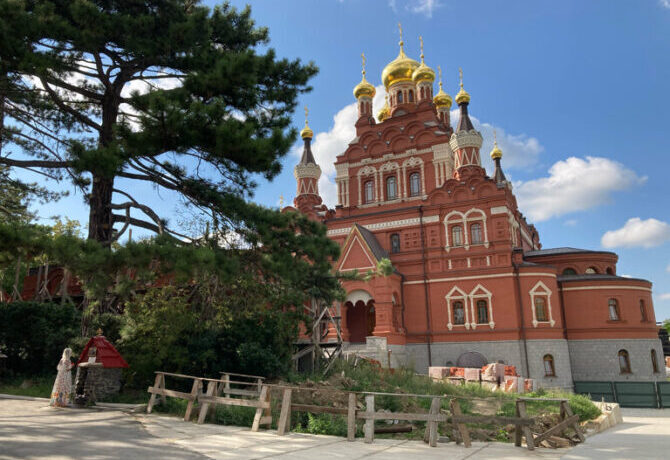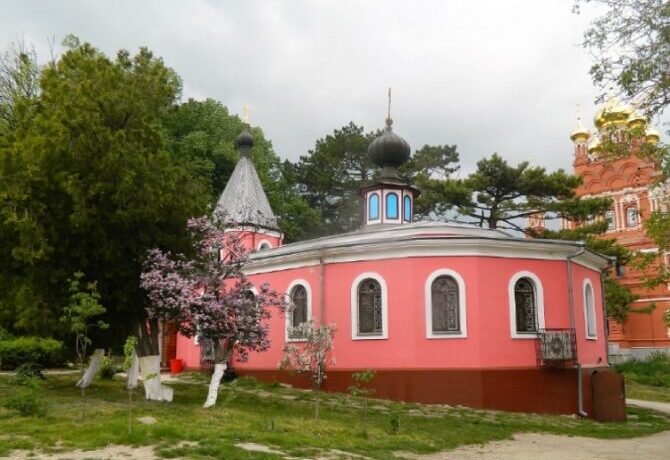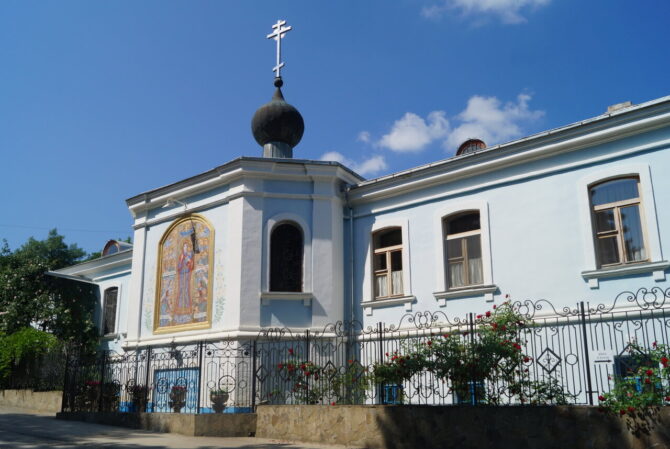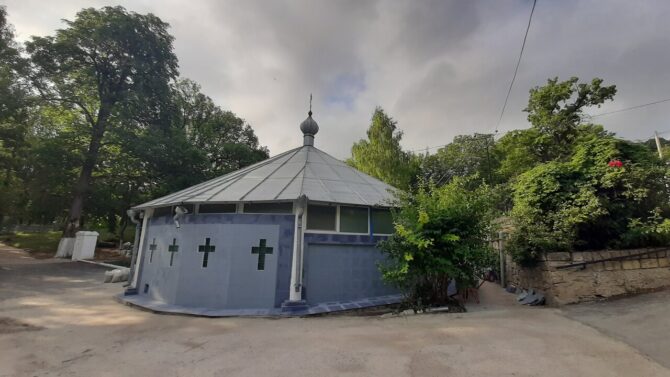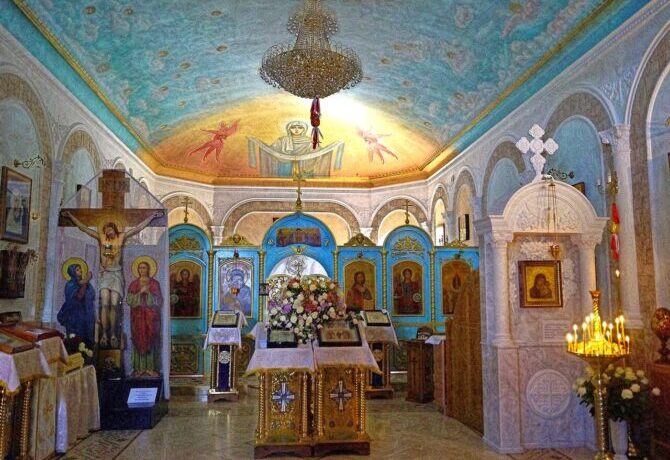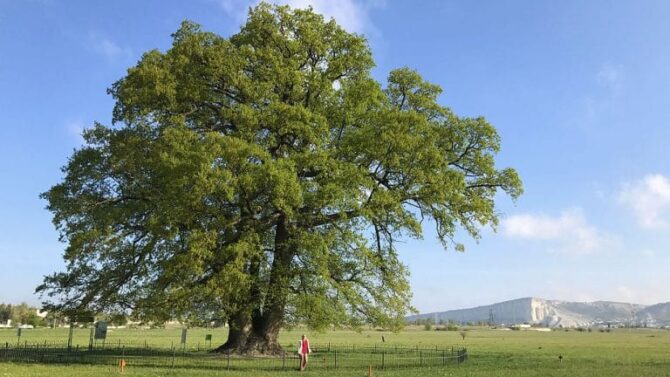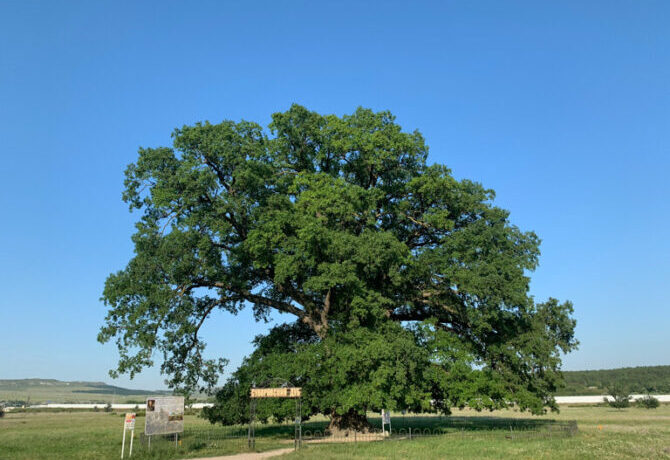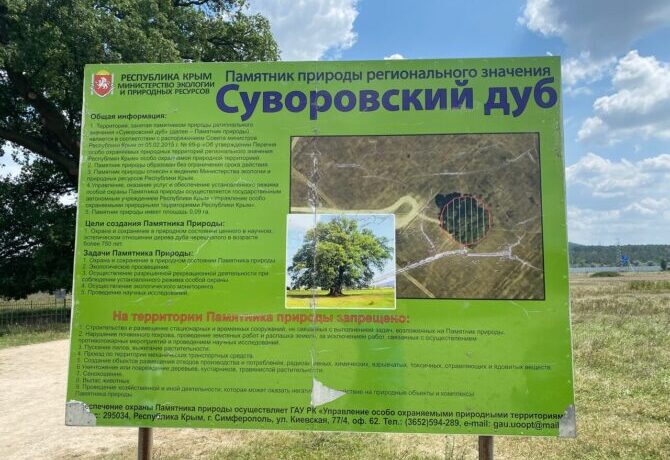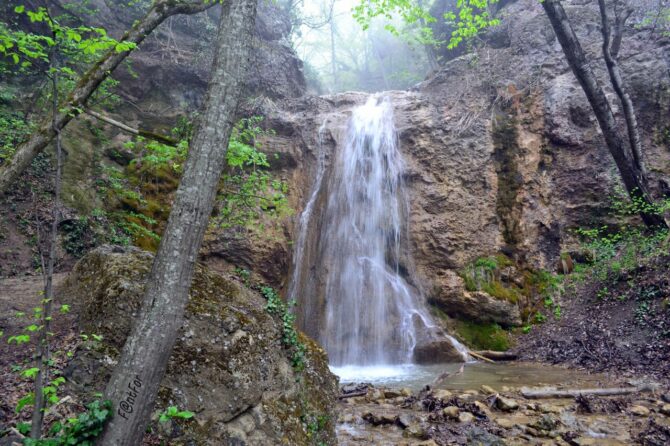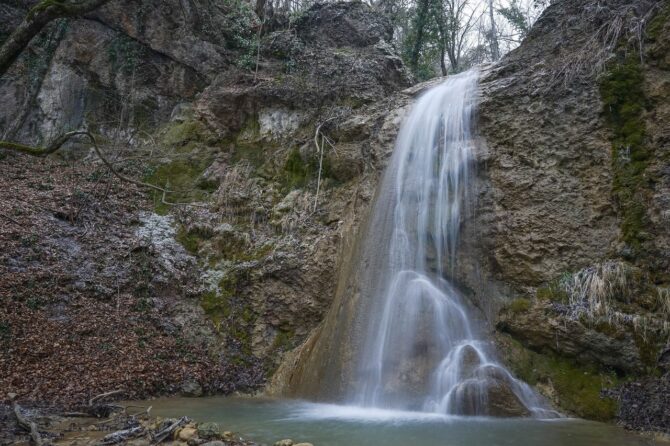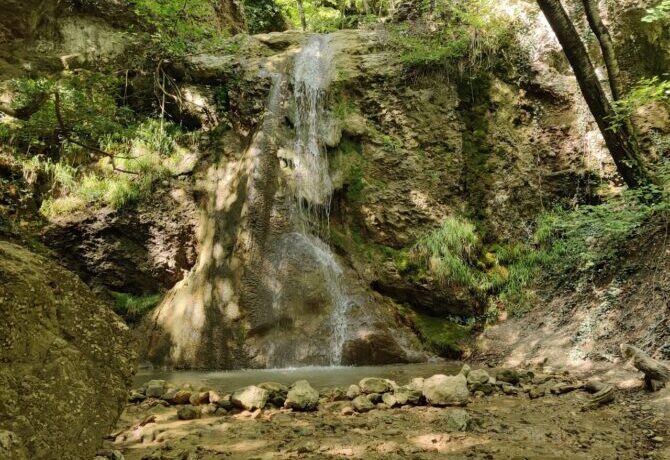Crimea is known to tourists primarily as a picturesque peninsula rich in sea resorts. However, in this region there are many other places of interest to travelers. On the peninsula there are dozens of small towns, in which there are many natural and architectural monuments belonging to different historical eras. Belogorsk, located 46 km east of the center of Simferopol, is one of them.
Why is Belogorsk interesting for tourists?
The first mention of the city, which now is home to a little more than 16 thousand people, refers to the XIII century. However, people settled on the territory of modern Belogorsk much earlier. Here they found traces of the stay of primitive tribes that lived about 150 thousand years ago. The place where Belogorsk is now located attracted a variety of peoples. For a long historical period, this territory was inhabited by successive people:
- ancient Greeks;
- Goths;
- Scythians;
- Armenians;
- Bulgarians;
- Huns;
- Crimean Tatars.
For the first time the city is mentioned in written sources as Karasubazar. This name can be translated from the Crimean Tatar as “Market on black water”. The Karasu is the river on which the city is located. Its full name is Biyuk-Karasu. The first word can be translated as “big”. For a long time, Karasubazar developed as a shopping center. Important routes passed through the city, connecting different parts of the peninsula.
Belogorsk received its modern name on December 14, 1944 This happened after Bulgarians, Crimean Tatars, Greeks and Armenians were deported from Karasubazar. For modern tourists, Belogorsk and its surroundings are interesting for several features:
- natural objects: rocks, waterfalls, caves, canyons and steppes;
- historical, cultural and sacred monuments;
- the opportunity to get acquainted with the lifestyle of a provincial city, located away from the famous seaside resorts of the peninsula.
Now in Belogorsk there is an Orthodox church, a mosque has been opened, 10 industrial enterprises and four secondary schools, including a lyceum and a gymnasium, are operating. 26 historical and cultural monuments have been erected in the city. There is a stadium, a 3D cinema, a museum of history and local lore, a children’s sports center, a house of culture and three libraries.
- 1 Attractions Belogorsk on map
- 2 Caravanserai Tash-Khan
- 3 St. Nicholas Church
- 4 «Cold Mountain» – pheasant nursery
- 5 Taigan Safari Park
- 6 “Horse Move” – equestrian tourist base
- 7 Red Beam – White Rock Ak-Kaya
- 8 Armenian Cathedral of the Savior
- 9 Kemi-Oba Mound
- 10 Scythian settlement Ak-Kaya
- 11 Kok-Asa Canyon
- 12 Cheremisov waterfalls
- 13 Karabi-yayla
- 14 Buzluk-Koba
- 15 Taigan Reservoir
- 16 Museum of Greek Settlement
- 17 Toplovsky Convent
- 18 Suvorov oak
- 19 Uskuta waterfalls
Attractions Belogorsk on map
Caravanserai Tash-Khan
Not far from the building of the City Administration in the place where four streets converge – Lunacharsky, Tolstoy, Bekir Choban-zade and Sadovaya – there are ruins of an ancient Crimean Tatar building. Tash-Khan is the name of the caravanserai, built around the XV century.
Before the modern inhabitants of the city and tourists appear the remains of the wall and well-preserved gates. The building, erected on the initiative of the vizier from the Shirinov family (Crimean Tatar people), played the role of an inn and market. The caravanserai was a two-story fortress, which included several objects:
- 120 rooms for guests;
- 2 iron gates;
- courtyard;
- premises for animals;
- warehouses;
- well with clean drinking water;
- 4 watchtowers;
- mosque;
- loopholes;
- powerful walls, the thickness of which reached 1.5 m.
The caravanserai was a place where the commercial life of the city and the region flourished until the XVII century. Merchants traded a variety of goods:
- utensils;
- wine;
- fabrics;
- bread;
- weapons;
- clothes and more.
Now you can see the remains of the caravanserai Tash-Khan at any time of the year. Access to the ruins is free. Not far from the caravanserai on Lunacharsky Street there is a stop of the city bus No. 2 (“Hospital”).
Tash Khan Web Page: http://qarasuvbazar.blogspot.com/2012/10/blog-post.html
Address: Lunacharskogo str.
St. Nicholas Church
On the territory of the compact quarter, surrounded by three streets – Kalinin, Semashko and Krylov – and Kalinin Lane, the building of the main sacred structure of the city rises. St. Nicholas Cathedral was built at the expense of parishioners and Count M. V. Kakhovsky in 1793 The original building was built in the Byzantine style, the distinctive feature of which is a large spherical dome and a high bell tower. The belfry of the temple has not been preserved.
St. Nicholas Cathedral, located 230 m south of the caravanserai Tash-Khan, has been rebuilt many times. The building, which appears to visitors now, is an Orthodox church with a bulbous dome and a small new belfry. The bell tower was built relatively recently, in 1989.
The inner hall of the cathedral is a spacious bright room decorated with high white columns. The solemn atmosphere is created by numerous icons placed on the walls of the temple, brightly burning candles, a painted vault and low-hanging gilded chandeliers.
The doors of the cathedral are open to visitors from 8 a.m. to 5 p.m. daily. The dark blue dome and blue roof of the structure are visible from a variety of points, including remote, points of the city. The temple can be quickly reached from the bus stop located next to the caravanserai on Lunacharsky Street.
Address of St. Nicholas Cathedral: Semashko str., 4.
«Cold Mountain» – pheasant nursery
In 1857, 8 km west of Belogorsk, a unique natural object appeared. On the initiative of N. S. Khrushchev, a pheasant farm was created here. In the first two years of the nursery’s existence, almost 1 thousand birds from Hungary and Romania were brought here. Party leaders of the Soviet Union gladly came to the “Cold Mountain” to hunt birds.
Since 1992, the nursery is part of the hunting farm, founded in the same year and occupying an area of 38.6 thousand hectares. Annually from 5 to 6 thousand pheasants are grown here. In addition to the nursery, on the territory of the hunting farm there are many other objects:
- mini-zoo;
- dining room and banquet hall;
- parking;
- barbecue areas;
- gazebos;
- 5 hunting lodges, each of which can accommodate from 2 to 4 people.
Among the inhabitants of the mini-zoo there are a variety of animals and birds: nutria, roe deer, martens, peacocks, wild boars, guinea fowl, deer, squirrels and other representatives of the Crimean fauna.
Accommodation in the house will cost each guest in the amount of 1 to 3 thousand rubles per day. The cost of excursion service to one visitor of the pheasant nursery is 100 p. Prices are valid for [y] The nursery receives guests monthly, excluding October and November. Most tourists prefer to visit the “Cold Mountain” in the second half of spring, summer and September.
Travelers get to the nursery from Belogorsk on the highway A-291, connecting the city with Simferopol. It is important not to miss the turn to the north in the direction of the “Cold Mountain”.
Hunting website: https://holodnaya-gora.ru/
Address of the hunters’ club and the administration of the institution “Cold Mountain”: Nizhnegorskaya street, 115
Surroundings
Small in size Belogorsk will not surprise tourists with a variety of attractions. However, acquaintance with the city will not disappoint travelers. A large number of objects that may be of interest to curious tourists are located in the vicinity of Belogorsk.
Taigan Safari Park
Oleg Zubkov, a Crimean businessman, managed to create a unique protected area on the shore of the Taigan reservoir, located southwest of the center of Belogorsk. In 2006, the construction of the future safari park began here. “Taigan” opened its doors to visitors in 2012 Safari Park, which now occupies an area of 32 hectares, got its name in honor of the reservoir, on the banks of which stretch its “possessions”.
A unique corner of nature arose on the place where for many years there was a military unit. Animals were delivered to “Taigan” from Russian and Western European zoos. The rarest individuals – white lions – came here from South Africa. Now “Taigan” consists of two parts: a safari park (20 hectares) and a zoo (12 hectares). On the territory of the natural complex there are several objects that provide a variety of pastime and comfortable accommodation for guests:
- Safari Hotel;
- Ferris wheel;
- attractions;
- conference rooms;
- three cafes – “Bungalow”, “Oriental Fairy Tale” and “White Lion”;
- souvenir shop.
On the territory of the zoo, the doors of the House of Birds are open for guests. The greatest interest tourists show to pink flamingos. Here, young visitors are welcomed by a contact mini-zoo, where you can feed the animals. Children and teenagers enjoy riding fast ponies. The zoo is home to a variety of birds and animals:
- raccoons;
- bison;
- elephants;
- peacocks;
- giraffes;
- parrots;
- yaks;
- chimpanzees;
- orangutan;
- zebrooslik;
- lemurs and others.
The safari park was created primarily to preserve the population of rare cat species. In conditions as close as possible to natural, several representatives of this group of animals live here:
- 40 Bengal and Amur tigers;
- cougar, lynx, jaguars, leopards;
- more than 60 African lions.
To move around the safari park, guests can use the services of a rickshaw or rent an electric car. Children and teenagers together with their parents are happy to ride on the train. For those who have financial capabilities, a helicopter flight over the territory of the safari park is available.
The cost of visiting “Taigan” for one adult guest is 1 thousand rubles, for children from 3 to 10 years old – 500 rubles In the period from October 1, [y] to March 31, [y], the price is reduced by half. The cost of excursions in the safari park depends on the vehicle used:
- on foot – 100 rub;
- on an electric car – from 200 to 6 thousand rubles, depending on the capacity of the car and the duration of the excursion;
- by helicopter – 20 thousand rubles (15 min.);
- on a rickshaw – 400 rubles (60 min.).
Tourists get from Belogorsk to the safari park from the bus station of the city on the road going to Alexandrovka and Zelenogorsky. Buses run along the same route. The stop is located at the turn to the safari park. From there, passengers continue by taxi. The distance from the bus station of the city to “Taigan” is 4.8 km.
The most favorable period for a visit to the safari park is from May to the end of September. During these months, “Taigan” welcomes guests from 8:00 to 20:00. In winter, access to the safari park stops at 16:00.
Taigan website: https://park-taigan.ru/
Social Media Web Pages: https://vk.com/safari_park_taigan and https://www.facebook.com/ParkTaigan/
Safari park address: Belogorsk, Lavender street, 1
“Horse Move” – equestrian tourist base
Fans of active pastime in nature have long appreciated the high level of service of the equestrian tourist base, located to the east of Belogorsk. The name “Horse Move” tells travelers what awaits them in this amazing place. However, not only horseback riding is available at the recreation center for active tourists. Guests will find a variety of different activities:
- conducting photo shoots;
- horseback riding in local lakes;
- visit to the mini-zoo;
- hunting for wild animals with prior registration of permission;
- fishing in lakes and rivers;
- horse and walking tours to interesting places of the peninsula;
- organization of festive events and weddings with on-site official registration.
Guests of the recreation center can stay in a hotel equipped with 4 quadruple rooms, or in a wooden house designed for eight people. Meals are organized for tourists. Products for dishes are delivered from an eco-farm owned by the recreation center. The cost of daily accommodation in a wooden frame for one person – from 7 to 9 thousand rubles In a hotel room – 3 thousand rubles Prices are relevant for [y].
Fishing enthusiasts can catch bass, bream, trout, carp, walleye and carp in the reservoirs located next to the tourist base. Equipment for this lesson is provided by the administration. Trophies of fans of hunting can be wild boars, badgers, woodcocks and seals. Guests are invited to take part in several excursions to the natural sites of the surrounding area:
- to Cheremisovsky waterfalls;
- Suvorov oak;
- the remains of the Armenian Monastery;
- White Rock.
The duration of each excursion is from 2 to 5 hours. The cost of events for one participant is from 2 to 2.5 thousand rubles. among tourists, such an activity as horseback riding is popular. The duration of the trip on horseback is 60 minutes. Swimming in the lake is 1 hour. The cost of the event for one participant is 1 thousand rubles A regular horse ride will cost each guest 500 rubles. for one hour. For vacationers, three meals a day are organized. The average cost of breakfast – 150 rubles, lunch – 200 rubles, dinner – 250 rubles.
Free parking is available on site. If desired, guests can visit the Russian bath. The cost of the service for 1 person is 800 rubles per hour. You can come to the tourist base throughout the year. Most travelers prefer the summer period, as well as May, September and October.
“Horse Ride” is located 18 km from the bus station of Belogorsk. The path passes along the road going to Feodosia. Motorists do not reach the village of Bogatoye and turn south towards Cheremisovka. Then you should continue the way to Krasnaya Sloboda.
Equestrian Tourist Base Website: https://hodkonem-crimea.ru/
Social media webpage: https://vk.com/hodkonem82
Address: Belogorsky district, Krasnaya Sloboda village, Druzhby str., 1a
Red Beam – White Rock Ak-Kaya
About 5.5 km north of Belogorsk is a rock that has become a symbol of the city and gave it its name. In the Crimean Tatar 325-meter mountain sounds like Ak-Kaya. This name is translated into Russian as “White Rock”. The origin of a natural object is the most common. The rock arose as a result of long processes of weathering and erosion of sandstone and limestone.
The vertical shape and white color of the slope make the mountain look like a ship. At the bottom of a flat strip stretches the Red Beam – a picturesque valley. It got its name due to the numerous peonies that bloom in the spring months. The white rock consists of two parts:
- upper with oval niches, grottoes and pillars;
- lower with hollows, boulders and screes.
During the Middle Ages, the White Rock Plateau served as a place of execution. In 1777, the headquarters of A. V. Suvorov was located here. In the 1960s and 1970s, Soviet archaeologists conducted large-scale excavations in this place. As a result of many years of work, Neanderthal sites were discovered, as well as the remains of extinct animals: cave bears, mammoths, saigas, onagers and red deer. In 1981, the White Rock received the status of a natural monument.
A long winding path leads to the top of the mountain. In good weather in summer and early autumn, you can also get here by car on a dirt road. From the observation deck, tourists look at the picturesque landscapes of the surrounding area for a long time, as well as photograph birds and carpets of flowers in the Red Beam.
To get from Belogorsk to the White Rock, you need to choose the road going through the village of Apple. The way lies to the village of White Rock, where it is necessary to find a bridge over the Biyuk-Karasu River. Next is a dirt road, along which you can not only get to the rock, but also climb to its top. Experienced travelers are advised to come here in the first half of autumn and summer.
Address of the rock and the Red Beam: Belogorsky district, the village of White Rock
Armenian Cathedral of the Savior
In the period from XI to XII century, the Seljuk Turks persecuted the Armenians. Representatives of this glorious Caucasian people settled on the peninsula. Later, on the territory of the Crimea between Feodosia and Belogorsk, the Armenians erected several spiritual buildings. One of them was the Temple of the Savior, founded in the XIV century.
Later, the building, located 15 km east of modern Belogorsk, became known as the Elijah Church and was part of the monastery complex formed here. The monastery existed until 1927 Then the monastery was closed, and the sacred structures were gradually destroyed.
Large-scale excavations were carried out on the territory of the former monastery in 1979 Archaeologists managed to discover the remains of the Armenian temple, as well as the ruins of other buildings, including a fountain, utility rooms and monks’ cell. Now you can see how majestic the monastery was in the past. Visitors look at the details of the remains of the Armenian temple for a long time:
- painted vault consisting of four parts;
- stone carvings on dilapidated walls;
- relief images, where you can find gospel stories.
Access to the remains of the Armenian Temple is free. Tourists come here in the warmer months. From Belogorsk it is necessary to go on the Feodosia road to the village of Bogatoye. The ruins of the temple are located 1.7 km south of the local bus station.
Address: Belogorsky district, Bogatoye village
Kemi-Oba Mound
On the territory of the Crimea there are many ancient monuments. Kemi-Oba, a mound dating back to the Bronze Age, is one of them. The burial ground was discovered during excavations conducted here in 1957-1958 This is a complex multi-layered funerary structure that was built by local tribes in 2800-2300 BC. e. Originally, these were two separate mounds. Gradually, one large burial ground was formed in their place, which included several artifacts:
- 3 wooden boxes;
- 4 catacombs;
- 3 stone boxes.
According to the found skeletons of people and objects, archaeologists have determined how local tribes lived in the early and middle Bronze Ages. People were engaged in cattle breeding and agriculture. Here was a well-developed technique of processing wood and flint. The people who inhabited this territory mastered the art of painting with red and black paints. Archaeologists have found a lot of evidence of the existence of three cults in the tribes: ancestors, fire and the sun.
Kemi-Oba is located about 7.8 km east of Belogorsk north of the village of Dozornoye. Now you can see the hills and stone ruins. Tourists can get to the burial ground from Belogorsk on the road going to Feodosia. After turning to Dozornoye, after a few hundred meters you should turn right and continue along the trails to a place where stone blocks stand out on the slope of a high mound are clearly visible.
Address Kemi-Oba: Belogorsky district, Dozornoye village.
Web page telling about the mound: https:// openarchaeology.rf/monuments/kurgan-kemi-oba
Scythian settlement Ak-Kaya
10 km north of Belogorsk and not far from the White Rock is one of the most famous ancient monuments of the peninsula. Ak-Kaya – Scythian settlement – occupied an area of 10 hectares. According to many Russian archaeologists and historians, the first capital of the late Scythian kingdom was located here.
The period of existence of the settlement covers a whole era – from the end of the IV to the I century BC. e. This was the time when the Scythians gradually moved from a nomadic to a sedentary lifestyle. Although studies of this area were conducted in 1924, 1984 and 2001, large-scale excavations on the territory of the settlement began only in 2006 and continue to this day. As a result of many years of work, it was possible to find several historically important objects:
- the remains of a defensive fortress;
- exterior and interior walls;
- remains of fortifications of the Hellenistic and Roman periods;
- towers and wall sanctuary;
- dilapidated fragments of the Khazar fortress.
Archaeologists managed to open a multi-layered monument, the structures of which belong to different historical eras. On the site of the first fortress, which existed in the IV-I centuries BC, fortifications of smaller sizes were erected in the I-III centuries AD (Roman period) and in the VIII-IX centuries (Khazar era).
Modern tourists with sincere interest inspect the few remains of the Scythian settlement. The most popular way to get acquainted with the historical monument of antiquity is to participate in excursions organized in Simferopol. Many travelers get to the settlement on their own.
This can be done by car or buses going from Belogorsk to Cherry, located near the settlement. From the village to Ak-Kay can be reached by hiking trails. Address of the Scythian settlement: Belogorsky district, village Vishennoye. Coordinates: 45.098863, 34.635173.
Kok-Asa Canyon
About 19 km south-east of Belogorsk is the “Blue Glade”. So you can translate from the Crimean Tatar name of the gorge Kok-Asan. The beginning of the route through the canyon is located on the southern outskirts of Povorotny – a small village. Through the canyon flows Kuchuk-Karasu – a turbulent river with clear water and numerous rapids.
It was the flow of water that led to the formation of the gorge. This process, which began tens of thousands of years ago, continues today. The width of the canyon is from 300 to 500 m, the height of the steep walls is from 10 to 15 m. Along the way you can see thickets of fern, beech and other shrubs, grasses and trees.
On the route for tourists equipped with platforms for tents. Here you can sit on the benches and have a snack at the tables. Tourists bring food with them. Experienced travelers are also advised to stock up on water, as there are no cafes, stalls or eateries in the canyon. Near the waterfall Gorge is equipped with a small observation deck, from which you can see the picturesque surroundings.
To get to the beginning of the Kok-Asan canyon, you need to get to Cheremisovka, then you should turn south towards Povorotny. The most preferred period for visiting the canyon is summer, the first half of autumn and May. Travelers do not recommend exploring the gorge in rainy weather. The duration of the walk is about 3 hours. Address of the canyon: Belogorsky district, Cheremisovka village.
Cheremisov waterfalls
The main purpose of a walk along the Kok-Asan canyon is to get acquainted with a unique natural object. Every traveler certainly wants to see Cheremisov waterfalls. The natural creation is located near the beginning of the gorge near the village of Povorotnoye. Around the waterfalls grow birches, beech, pines, as well as shrubs and grasses, little known to ordinary tourists.
The Kuchuk-Karasu River feeds the cascades with water. The height of the waterfalls is from 10 to 20 m. Cascades become especially full-flowing in spring during the flooding of the river and in autumn in rainy weather. Four waterfalls have names:
- Pigtail (the smallest);
- waterfall of Love;
- Gorge;
- waterfall of Youth.
Travelers enjoy admiring the picturesque landscapes near the cascades. Two waterfalls – Love and Youth – form small lakes. You can swim in them. Swimmers should note that the water never heats up above + 10 degrees.
Tourists are happy to arrange photo shoots on a compact observation deck, equipped next to the Gorge Cascade. Travelers get from Belogorsk to Cheremisov waterfalls along the same path that leads to the Kok-Asan canyon.
Address of cascades: Belogorsky district, Povorotnoye settlement
Karabi-yayla
Nature lovers who get acquainted with the surroundings of Belogorsk can visit the “pastures of the mountain spider”. So you can translate from the Crimean Tatar name of the mountain range Karabi-yayla. The total area of the natural object is 120 sq. km. The highest peak is Tai Koba. Climbing it is very popular among active tourists. The height of the peak is 1262 m.
Near Tai-Koba and not far from the village of Generalskoye there is a tourist parking. From here begins the trail to the top, which can be reached on foot or by car. Yayla is the name of flat mountain ranges. Karabi-yayla consists of two plateaus: lower and upper.
The mountain range is rich in caves, karst sinkholes and mines. At the top there are many varieties of meadow grasses. Among the most accessible and frequently visited, several caves stand out:
- Friendship;
- Heba;
- Sesame;
- Kara-Murza;
- Fairy tale;
- Buzluk-Koba.
Karabi-yayla is located 19 km south of Belogorsk. Inexperienced travelers get to these parts as part of excursions in comfortable cars. Active tourists go on the road through Krasnoselovka to Privetny. Then you need to turn right and continue along the highway connecting Sudak and Alushta. In Solnechnogorsk should turn north and continue the way to Generalsky.
The most suitable time to explore the mountain range is summer, late spring and September.
The address of the place from where the route to the upper plateau of Karabi-Yayla begins: Alushta, the village of Generalskoye, the tourist parking lot Ai-Aleksey
Buzluk-Koba
In the southern part of Karabi-yayla is the “Ice Cave”, well known to speleologists. In Crimean Tatar it is called Buzluk-Koba. The cave is located 33 km south of Belogorsk, if you go by road. The natural object is a karst fault of large sizes.
The length of the cave, consisting of two spacious halls, is 165 m. The bottom is covered with an ice layer formed from snow that has melted for many years. Inside the halls there is also a well, the depth of which exceeds 19 m. The decoration of the cave, located at an altitude of 1 thousand meters, were ice columns formed by stalagmites and stalactites.
Guides tell tourists an interesting fact from the history of Buzluk-Koba. In the XVIII-XIX centuries in these places the Austrians rented land near Karabi-yayla for sheep breeding. The meat of the animals was stored in a cave that served as a natural refrigerator. After that, the product was sent for sale to Ukrainian cities.
Tourists most often come here in the warmer months. From Belogorsk can be reached by the road going through Novoklonovo. Before reaching the village of Balki, you need to turn left and continue the way to the weather station.
There is a trail to the cave with the unexpected name “Spaniard”. Address Buzluk-Koba: Belogorsk district
Taigan Reservoir
On the territory of the peninsula there are 23 artificial reservoirs. The Taigan reservoir, located in the south of Belogorsk, is one of such objects. Construction work began in January 1934 and was completed in November 1938 The reservoir was named after Taigan – a small village that was located in this place. Later it was renamed Ozernoye, but after a few years ceased to exist.
Taigan reservoir is a large artificial reservoir. The area is 2 sq. km, the depth is from 3 to 16 m, the length of the coastline is about 16 km. The reservoir is found in fish such as pike, walleye, perch and white cupids. Thanks to the artificial reservoir, nearby cities are supplied with fresh water.
The reservoir can be reached by city bus. The nearest stop is located on Zaprudnaya Street.
Address of the reservoir: Belogorsk, Taiganskaya str.
Museum of Greek Settlement
To the west of Belogorsk in Chernopillya – a compact village – is located “Karachol”. So unusually called cultural and ethnographic center, created in 1992, the House, which now houses the Museum of Greek settlement, was built in 2003 Presented here the exposition has become available to visitors since 2004 Great help in collecting unique objects and artifacts played by employees of the Crimean Ethnographic Museum.
Since ancient times, Thracian Greeks have lived in the village. It was this community that took the initiative in organizing a cultural and ethnographic center. The museum building, located at the intersection of two streets: Sadovaya and Shosseynaya, is stylized as rural houses of the Thracian Greeks of the middle of the XIX century.
In the ethnographic center you can see household items and furniture of that time, as well as antique embroidery, clothes and photographs. All exhibits tell about the history, traditions and lifestyle of the Thracian Greeks. In the museum, musicians and performers of Greek songs are often arranged for visitors.
The distance from the bus station of Belogorsk to the ethnographic center “Karachol” is 5.2 km. The Museum of Greek Settlement can be reached by bus or car. The stop is located next to the “Karachol” on Shosseynaya Street. There are buses going to Feodosia, Kerch or Sudak.
You can visit the museum any day. Admission is free. The institution does not have a special work schedule. Events and activities can be found on site. Guests visit the cultural and ethnographic center throughout the year.
Museum webpage: https://belogorskiy.rk.gov.ru/ru/structure/19
Address of the ethnographic center: Belogorsk district, Chernopillya village, Sadovaya street, 1.
Toplovsky Convent
28 km south-east of Belogorsk are the “possessions” of the monastery, which bears the name of St. Paraskeva. The monastery was founded in September 1864 The construction of sacred structures continued until 1917 In the Soviet period, life in the Toplovsky convent stopped.
The revival of the monastery began only in 1992 Now it is a large monastery complex, which includes several objects:
- Trinity Cathedral;
- chapel;
- two churches: St. Paraskeva and in honor of the icon of the Mother of God;
- three holy springs.
On the territory of the monastery there are also other objects not related to religion: refectory, icon and bookshops, a hotel and a tea room. There is also a spacious parking. Parking is available free of charge. Accommodation in the hotel will cost everyone 400 rubles per day.
Excursions for visitors are held daily from 8:00 to 17:00. During the winter months, activities start an hour later and end an hour earlier. Donation – 150 p. Duration of the excursion – from 20 to 60 minutes. Divine services in the temples of the monastery are held daily. Their schedule can be found on the spot or on the official website of the monastery.
The main shrine of the monastery is the relics of St. Paraskeva. Guests of the monastery complex can get acquainted with the taste of dishes prepared by nuns in the refectory. The cost of a complex lunch is 300 rubles On the territory of the monastery is equipped with a font of St. Paraskeva. Guests can visit it free of charge any day from 9:00 to 16:30.
Pilgrims and ordinary tourists come to the monastery in summer and winter. From Belogorsk to the monastery travelers get on the road going through Chernopillya, Rich and Joyful to Topolevka. Next, turn right and navigate the signs.
Monastery website: https://www.toplovskyi.ru/
Social media webpage: https://vk.com/toplovskyi
Address of the monastery: Belogorsky district, village Educational
Suvorov oak
To the north of Belogorsk is located Apple. This small village became famous thanks to the unique Suvorov oak. The tree got its name because of an important historical event that occurred under its crown. According to legend, at this place in March 1777, A. V. Suvorov negotiated with the envoy of the Turkish sultan. In 1997, the oak received the status of a natural monument. The tree surprises with its characteristics:
- height – about 19 m;
- crown diameter – almost 40 m;
- age – more than 800 years (according to other sources – more than 750 years);
- diameter at the base – 4.2 m.
For the convenience of tourists, the Suvorov oak has benches. There is also a stand with information about the historical event and the tree. The oak tree is located 236 m from the center of the village of Apple. The distance from belogorsk bus station to the tree is 3.5 km.
From the city to the oak Suvorov can be easily reached on the road going to Kerch. The bus stop is located on Shosseynaya Street, passing through Apple. The most vivid impressions are received by tourists who come to the natural monument in May, September and summer.
Address of Suvorov oak: Belogorsky district, Yablokoye village
Uskuta waterfalls
In addition to places well known to tourists, the Crimea is rich in no less interesting corners, where travelers are rare guests. Uskuta waterfalls, located 26 km south of Belogorsk, due to inaccessibility and remoteness are poorly explored by nature lovers.
However, this place is definitely worth a visit. Uskut, a river 12.7 km long, flows through the peninsula with a winding artery and flows into the Black Sea. On the site between two rocks – Hurguch and Khiz-Kaya – there are seven waterfalls. The height of each of them is from 2 to 10 m.
Experienced travelers recommend seeing first of all a 10-meter waterfall. The area around it is equipped with bridges. There is no infrastructure and gastronomic establishments here. Come to the waterfalls is in April, May or September. It is during these months that the cascades are the most full-flowing and picturesque.
To get to the waterfalls from Belogorsk, you should go along the road going through Krinichnoye, Golovanovka and Krasnoselovka. From the last village it is still necessary to overcome the distance of 5.5 km.
Address of waterfalls: Belogorsky district, Krasnoselovka village
Belogorsk is a small Crimean city surrounded by numerous attractions
Crimea always surprises tourists with a variety of interesting places. Although compact Belogorsk is not rich in attractions, the surroundings of the city are able to impress travelers with a wide selection of historical, cultural, natural and sacred objects. On a small corner of the Crimean land intertwined fate of different peoples. The nature of the peninsula will also not leave indifferent those who know how to appreciate the modest beauty of the steppes, mountains, valleys and waterfalls.

